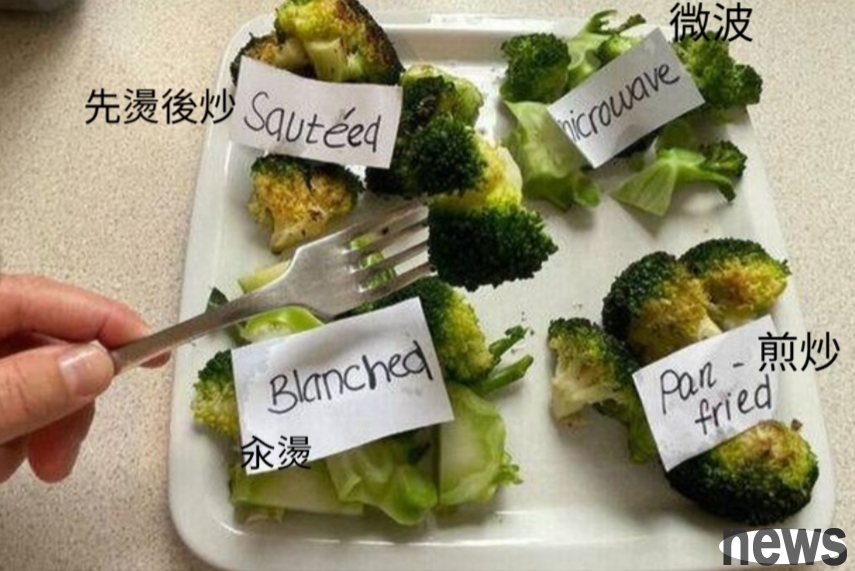
Cauliflower is known as a super food. It is rich in nutrients such as vitamin C, dietary fiber, and sulforaphane. It has the characteristics of low calories and high satiety. It can also help lose weight, improve intestinal health, enhance immunity, resist oxidation, and prevent many diseases. The British Mirror tested four quick cooking methods to find the "perfect cauliflower cooking method" that can balance deliciousness and texture.
Cauliflower, a green vegetable that looks like a small tree, is one of the most versatile and nutritious vegetables. Perfect for baking, steaming, stir-frying, or even pureeing. Despite its many benefits, cauliflower is one of the hardest vegetables to cook "just right."
{99 9}When many people try to stir-fry, they accidentally make the food charred and bitter; when they choose steaming, blanching or boiling, it tends to become soft and tasteless. Mirror reporters tested four common cooking methods to find out how to make them quickly without sacrificing deliciousness and texture.
The four cooking methods include direct frying, traditional blanching, quick microwave, and a hybrid method of blanching first and then quick-frying. The reporter finally found a "definitely winning" method that can make cauliflower fragrant and taste perfect in just a few minutes.
1.MicrowaveThe fastest method: microwave. Place the chopped cauliflower in a microwaveable bowl, add 4 tablespoons of water and cook on high heat for 3 minutes.
The result is as fast as expected, with a soft texture but still retaining a bit of crispness. But this approach fails to allow for seasoning during cooking, resulting in a very bland overall taste. It's fine if you want to puree it as a soup, but it's boring as a stand-alone side dish.
Even if you add salt or seasoning afterwards, it will be difficult to make up for the flavor, but it is better to eat it with sauce.
2. BlanchPut the cauliflower into boiling water and cook for 3 minutes, then immediately put it into ice water for 3 minutes to cool down to stop heating. This method is perfect in appearance and the cauliflower retains its vibrant emerald green color. But the taste is similar to the microwave version, with a slightly watery taste and the flavor is diluted.
All the sweetness seems to have gone into the boiling water. Although it looks good, the taste is bland. This method is ideal if used in a cold salad, but may lack flavor if used as a hot side dish.

First add a little cooking oil in the pan, heat it over medium heat, add the cauliflower florets, and season with appropriate amount of salt and pepper. To avoid burning, add a little water and cook for about 8 minutes. The result is a peppery aroma, slightly charred golden exterior, and an attractive appearance.
However, the taste is hard and slightly crispy, which may not meet everyone’s expectations for cooked vegetables. The biggest drawback is that spices like garlic can't be added because the high heat required to color raw cauliflower will burn them quickly.
4. Mixed method of blanching first and then stir-frying (the best method)Finally, I tried the mixed method of "blanch first and then stir-fry quickly", and the result was surprisingly good.
First blanch the cauliflower for 3 minutes, soften it slightly, then remove it, add a little oil (less than the frying method) and season with salt and pepper, and stir-fry in a pan for about 9 minutes.
This effect is very ideal. Blanching makes the cauliflower soft yet crispy, while the subsequent quick frying adds a slightly charred aroma and attractive golden color. The seasonings also create a subtle crispy layer for a rich texture.
This method combines the advantages of two things: blanching allows the vegetables to be heated evenly without being raw, while the latter stage of quick frying imparts a caramel aroma and deep flavor, and is less likely to burn. If you don’t want to blanch it first, you can also stir-fry it over low heat for a longer time, and the effect will be equally good.

Next:None